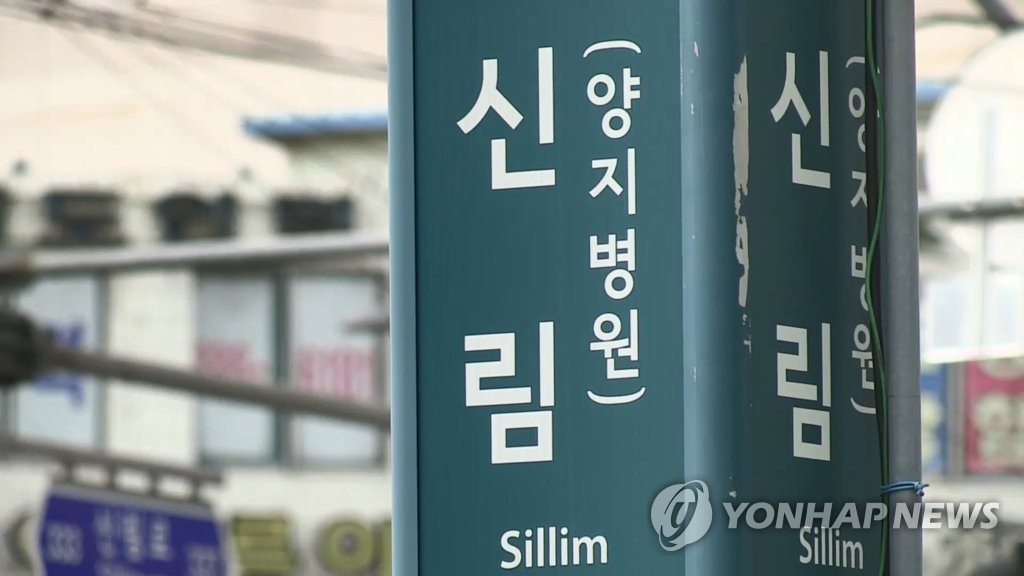 |
| ▲ Sillim Station, where a stabbing that drew attention to copycat crimes (Photo from Yonhap News) |
Since the Sillim Station stabbing on July 21, South Korea has been in a state of disarray, suffering from a series of heinous crimes, and as a result, the nation has witnessed an escalation in tension within society. Post-reporting of the violent attack, there has been an increase in stabbings and bomb threats targeting people in urban areas. The Sillim Station stabbing seems to have been the catalyst for this increase in violent behavior, with copycat crimes emerging and an alarming proliferation of death threats appearing on the Internet. While people have the right to know about the potential dangers in their society, their understanding of social phenomena is largely shaped by mass media, especially when it comes to gauging the seriousness or fear associated with the news. Negative news, such as violent crimes, tends to have an even greater impact. With the recent intensive reporting of violent crimes and the subsequent increase in violent crimes across the nation, it is worth asking if there is a correlation between copycat crimes and mass media coverage, and if so, how can we mitigate the adverse consequences?
On July 21, at approximately 2pm, a man was brutally stabbed 10 times at the entrance of a shopping mall near Sillim Station on Subway Line 2. Following the violent attack, the assailant threatened three men inside the alley. None of the victims had any prior connections with the perpetrator. This incident was particularly worrisome because it took place in broad daylight near a busy subway station. Typically, this time of crime occurs at night in secluded locations. On August 3, just two weeks after the Sillim Station incident, another disturbing act of violence took place at AK Plaza near Seohyeon Station. According to witness reports, the assailant deliberately drove into pedestrians on the sidewalk before exiting his vehicle brandishing a knife at random people in the vicinity of AK Plaza. The incident took place during rush hour and resulted in 14 injuries, surpassing the number of casualties from the previous tragic event. Since then, videos and images capturing these criminal acts have been propagated widely on social media, accompanied by a warning to refrain from going out. In the two weeks following the initial report of knife violence, this disturbing series of similar crimes escalated public concerns about community safety. By August 3, a proliferation of death threats began to spread across online communities, adding to the unease felt by citizens. The following day, a young man posing as a former student at a high school in Daejeon, gained access to the premises where an hour later, he attacked a teacher with a knife in the teacher’s office. An ongoing investigation is examining the possible motives of the act and to identify the perpetrator. On the same day, a man carrying a weapon was apprehended by the police at the Seoul Express Bus Terminal in Seoul. He didn’t wield a weapon against passersby, thereby averting casualties, but he was arrested on charges of special intimidation. Over just a brief period of time, this surge in comparable incidents has resulted in numerous victims and prompted speculation of being labeled copycat crimes. The events spurred deep concerns about the overall security of Korea.
 |
| ▲ People should keep an eye on the rising rates of copycat crimes caused by mass media. (Photo from Unsplash) |
A copycat crime refers to a criminal act that mimics and reproduces a crime committed by someone else. The assailants get ideas from the criminal acts of others and try to replicate them. The validation of a copycat crime hinges on a few key factors. First, the perpetrator must have seen or learned about the incident through the mass media. The details must also mirror a prior criminal act from the target or the choice of target, the motives, and methods of carrying out the crime. Due to these defining characteristics, copycat crimes have a profound and swift effect on society significantly amplifying social anxiety. Reporting on crimes through mass media has a greater impact on adolescents who are not cognitively mature enough to process the information. Reports of violent crime often result in heightened anxiety in teenagers who perceive the world as violent and dangerous. Furthermore, it is possible that reports of violent crime glorify the actions of perpetrators further raising the risks of copycat actions. The defining characteristic of a copycat crime is that it originates through information yielded from mass media. Perpetrators often find themselves identifying with the original assailant. French sociologist Jean Gabriel Tarde found that people prone to violent crimes are highly aggressive and choose to replicate murderers they learned about through mass media. Therefore, copycat crime is not caused by direct contact with a specific person who committed a crime in the past, but rather by indirect contact through mass media. In other words, crime-related reports in mass media have positive and negative effects. They help society become more aware of potential dangers while at the same time act as a source of inspiration for disturbed individuals.
Faced with the outpouring of murder threats, people were legitimately scared. Events were canceled and some stores were closed. Traffic was also paralyzed. In addition, police and security agents were being deployed to warn of potential dangers creating more societal anxiety. Copycat crimes brought about unexpected shifts in human and financial resources. So, what can be done to address the fear of copycat crimes? First, improving the role mass media plays in reporting violent crimes must be prioritized. Reporting and reenactment restrictions are necessary. Some programs provide detailed descriptions of the crime, the methods used by the assailant, and the investigative techniques of the authorities, enabling the public to learn details that can easily result in replication and even build sympathy for the assailant. Reenactments in particular can promote copycat crimes, by providing a strong visual for disturbed individuals. Rather than explicitly detailing violent events, social media should instead focus on the resulting damages and social harm they cause. This would raise awareness about the crimes and shift the focus to empathy for the victims, suppressing the risk of copycat crimes. Next, continuous management and supervision of harmful content on the internet is required. Simplifying the reporting process or expanding the reporting reward systems against harmful media could help. However, since it is not easy to continuously monitor and report this type of content, considerable efforts will be required. There is also a need to strengthen the responsibility of the content provider. They should have a sense of responsibility for management and supervision of their content. Intensive monitoring of platforms that allow the sharing of information on violent crimes or the creation of an atmosphere that arouses criminal acts is critical. In addition to improving the role of mass media, education measures are also required. Adolescents should not be exposed to extreme violence and should also be made aware of the potential harm caused by copycat crimes and the associated legal responsibilities. Lastly, strict preventive measures and effective treatments are necessary for adolescents of 14 years of younger who have been released without criminal punishment due to age restrictions. If both prevention and follow-up measures are properly applied, copycat crimes will be noticeably reduced.
The wave of copycat crimes in Korea still shows a serial form. Even if it's not always murder, more and more audacious crimes are threatening our society every day. If someone is suffering from mental health problems, due to stress or trauma, the potential for copycat crimes is greater, especially with extensive media reporting. In order not to be swayed by intensive reporting, a robust response and change in the status quo of operations is essential. Families and schools need education to prevent crimes and protect the mental health of those affected by extensive mass media reporting. Increased education will also help. In the end, policy measures that pay particular attention to dissemination of information on violent crimes through mass media will soothe the anxious feelings of the people and help the nation move closer to healing.
김주연, 이진희, 이은희, 배서연 dankookherald@gmail.com

 Vote for the Campus Brand Naming!
Vote for the Campus Brand Naming!

![[Campus Magnifier] Let's Surf the Library!](/news/thumbnail/202404/12496_1765_4143_v150.jpg)




